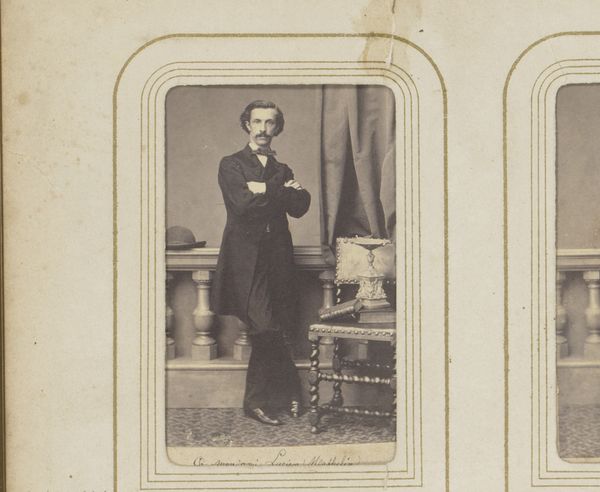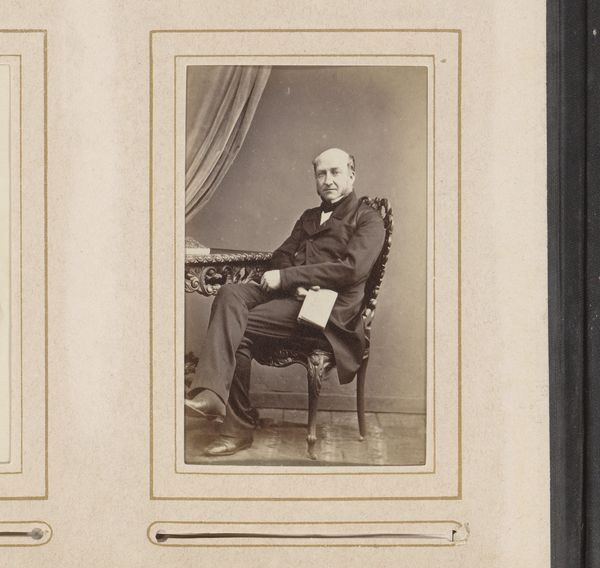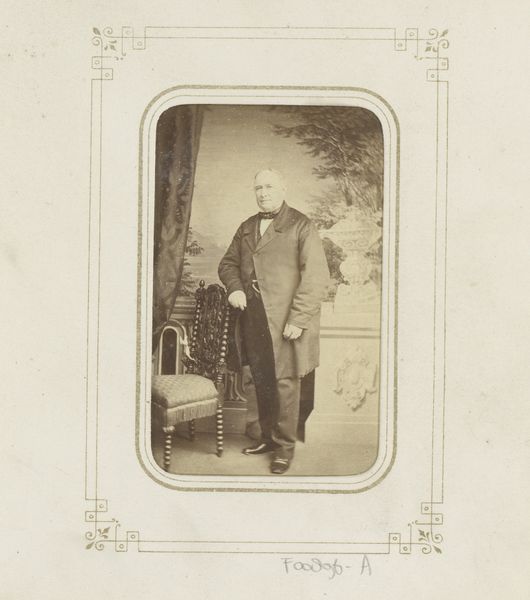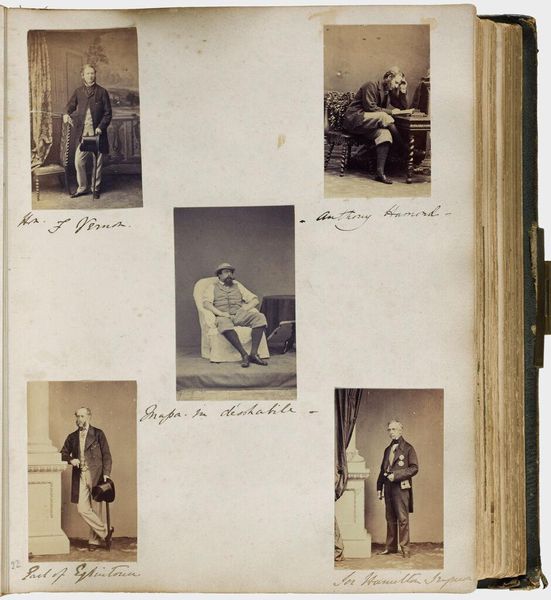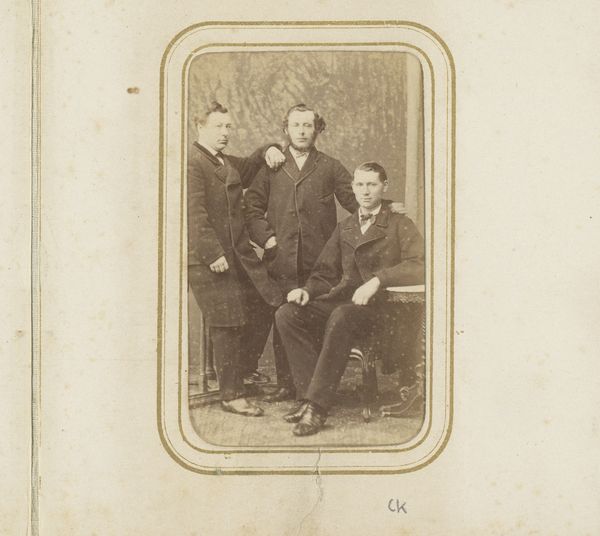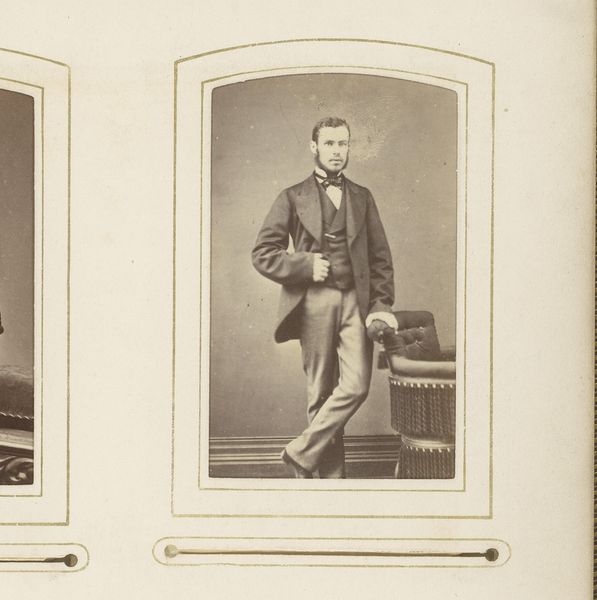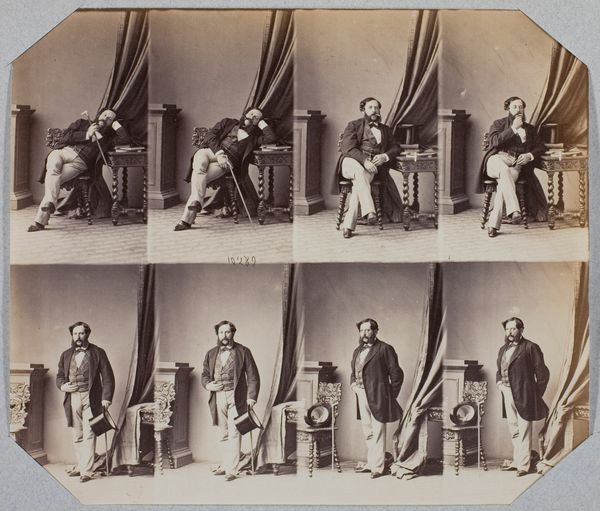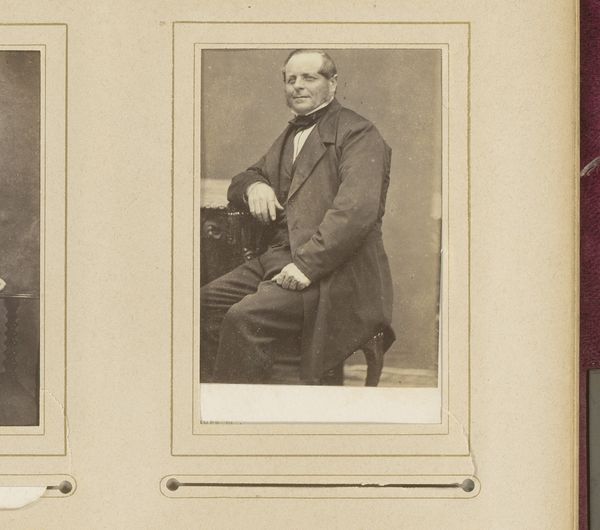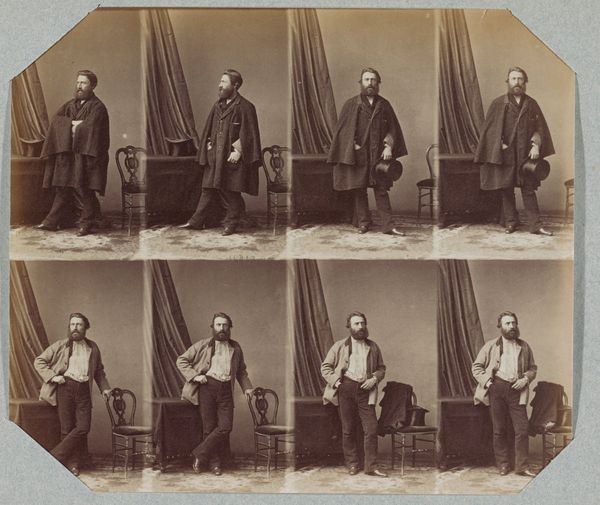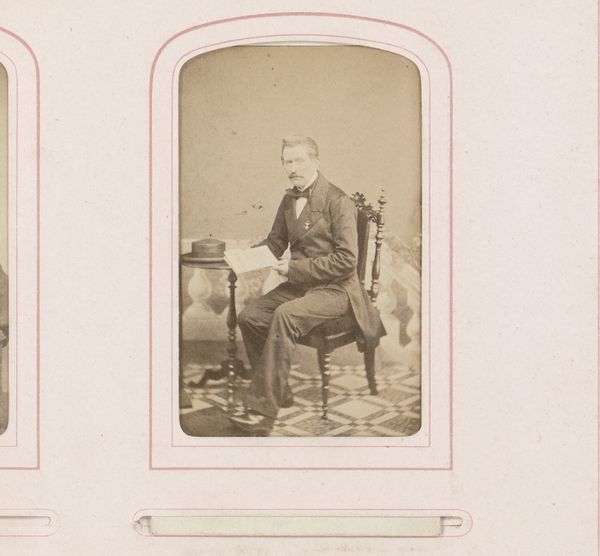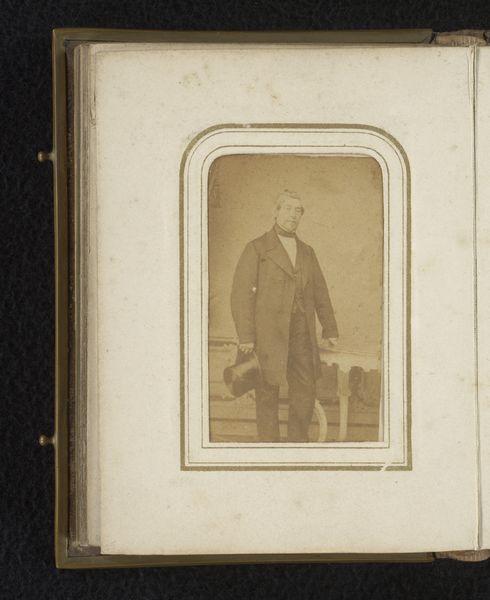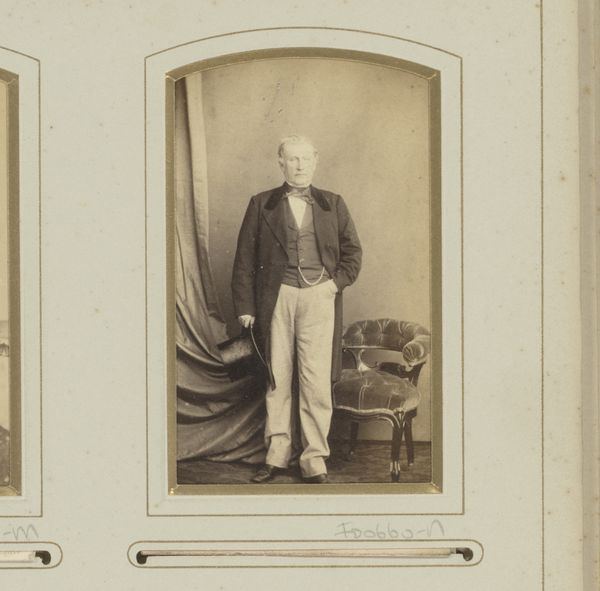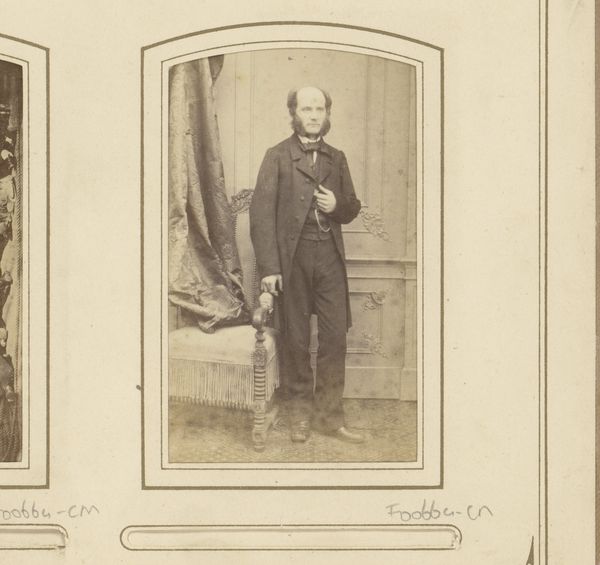
albumen-print, photography, albumen-print
#
albumen-print
#
portrait
#
archive photography
#
photography
#
historical photography
#
france
#
history-painting
#
albumen-print
Dimensions: 7 13/16 x 9 1/8 in. (19.84 x 23.18 cm) (image, sheet)10 3/8 x 13 3/4 in. (26.35 x 34.93 cm) (mount)
Copyright: Public Domain
Curator: This is Andrè-Adolphe-Eugène Disdéri's "Lord Gray," an albumen print dating to the 19th century, held here at the Minneapolis Institute of Art. Editor: It strikes me immediately as quite formal, almost theatrical. The doubled image, the staged props, and the stark lighting lend a surreal, almost uncanny quality to the composition. Curator: Indeed. Disdéri, a French photographer, was a master of the carte-de-visite format, popularizing affordable portraiture and thus democratizing access to representation during the Second Empire. "Lord Gray" embodies this trend, showcasing a specific sitter, likely of some note at the time. Editor: Looking closely, I am intrigued by the repetition and mirroring. It emphasizes a particular set of poses, textures, and shapes—notice the repeated angles of the arm resting on the chair and the sheen on those well-placed top hats. Curator: The composition also speaks to the sitter's social standing, consider not only the costuming but also the staged backdrop with the ornately upholstered furniture and drapery suggesting a space of power and influence. These elements act as visual signifiers of class and privilege during that era. Editor: Yes, there’s almost a sculptural quality given to Lord Gray through light and shade, lending depth and solidity. However, the photographic medium flattens all things—fabric, flesh, furniture. It seems like an interplay between these contradictory illusions and material qualities. Curator: We can read "Lord Gray" through the lens of power dynamics present in the 19th century, a reflection of class, identity, and even the politics of visibility itself. Who was deemed worthy of representation, and how were they framed within the social narratives of the time? Editor: Examining Disdéri's print, the technical aspects guide my curiosity. Consider the chemical process itself, the manipulation of light and chemicals on the coated paper to produce form. It speaks to the fascinating semiotics embedded within this specific medium. Curator: Disdéri's photograph reminds us that portraiture, even in its seemingly objective form, always involves choices—choices that reflect not only the sitter's persona, but also the broader societal values and power structures that shaped their world. Editor: Indeed, I now view "Lord Gray" with renewed appreciation, acknowledging not only its compositional arrangement but the very construction of photographic language.
Comments
No comments
Be the first to comment and join the conversation on the ultimate creative platform.
